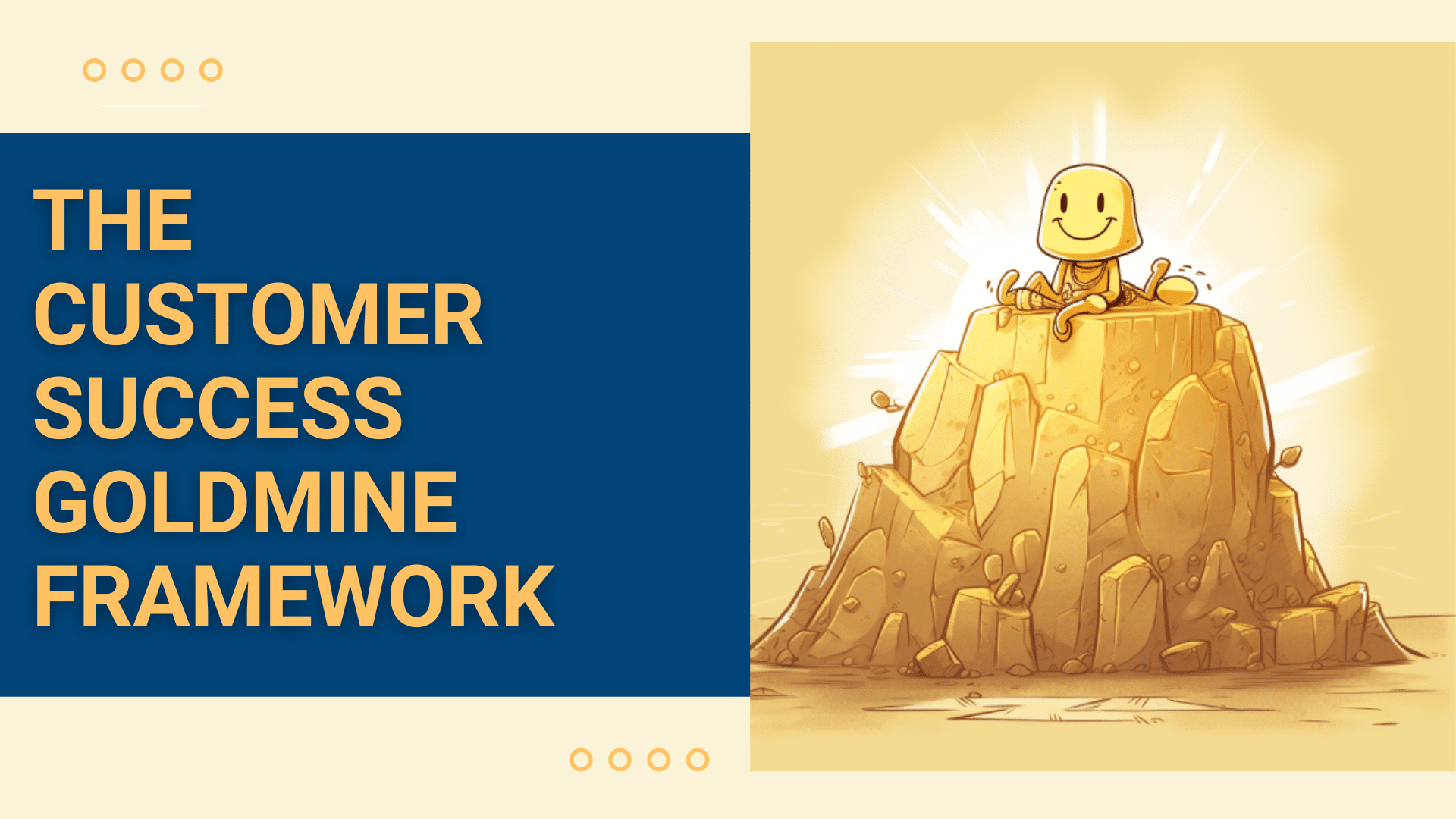No one argues that product, marketing and sales are business critical functions. With the collapse of Silicon Valley Bank in 2022, and the concurrent economic slowdown, many Customer Success teams had their headcounts cut and their budgets slashed. Some Customer Success teams experienced a complete shutdown as companies scrambled to cut costs.
While product, marketing and sales saw their budgets cut and their teams shrink too, their functions were preserved in ways that Customer Success didn’t experience. The reason for this? In many companies, Customer Success still isn’t seen as a business critical team. CS is still viewed as a cost center or as a dumping ground for customer activities that have no home. This view leaves Customer Success vulnerable in times of economic hardship.
I wrote this guide to show Customer Success Leaders like you how to remove that vulnerability and to become a business critical function – to sit on the same level as product, marketing and sales. To do this, I’ll share the Customer Success Goldmine Framework, a strategy we use with our clients to transform Customer Success from a perceived operational necessity to an indispensable business function, ensuring its stability and importance, especially during economic downturns.
The CS Goldmine Framework: A Strategic Approach
The CS Goldmine Framework is designed to bridge the significant gap in executive understanding and demonstrate the indispensable role of Customer Success in driving revenue and fostering long-term business resilience.
Step 1: Choose the Target Team
Choosing the right internal team for collaboration is the first crucial step. Typically, the Marketing team is a strategic choice because of its direct influence on customer perception and acquisition. By forming a partnership with Marketing, CS Leaders can leverage their unique customer insights into customer needs and behaviors. These customer insights enhance marketing strategies, which lead to better-targeted campaigns and improved customer acquisition.
A recent PWC survey of Chief Marketing Officers found that 35% of CMOs cited expanding organizational relationships as a top 3 priority. Increasingly, CMOs are working with or looking to work with their counterparts across the organization.
Step 2: Research What Matters
Understanding the goals and KPIs of your chosen partner team is essential. In the case of Marketing, this may involve delving into metrics such as conversion rates, customer engagement levels, and campaign effectiveness. CS leaders can create a compelling case for the strategic value of their customer insights to Marketing by understanding which KPIs and goals matters most to their Marketing Leader. The remaining 3 steps of the Customer Success Goldmine Framework show you how to do this.
Step 3: Conduct Customer Interviews
This step involves engaging directly with customers to gather qualitative data. These interviews are opportunities to uncover deep insights into customer needs, expectations, and experiences. The customer insights data from these interviews are not only valuable for shaping your Customer Success strategies but they also provide tangible data that can help your company’s Marketing Leader test in new marketing campaigns.
(For more info, check out the Ultimate Guide to Customer Feedback article. And to effectively run your customer interviews read this article.)
Step 4: Analyze the Data for Key Insights
Once the customer interviews and data collection are concluded, the next step is sifting through the data to identify key points and trends. This process is vital for uncovering the specific ways in which your product or service delivers value to different customer segments. (Discover how to run and analyze your customer interview data in this article on Running Successful Customer Exit Interviews.)
Let’s say, for example, that your analysis revealed that 70% of customers from a certain segment had confirmed success plans, primarily focused on cost reduction. This insight is not just a statistic; it’s a narrative about the value customers derive from the product – in this case, significant cost savings. As a CS Leader, you can then articulate this data to your company’s Marketing Leader, along with showing how your team’s interventions and strategies contributed to these cost savings.
This refined understanding – that the product is instrumental in reducing operational costs for customers – provides a powerful message. Such insights, backed by concrete data, equip the Marketing team with a compelling value proposition to test in the market. This is an example of how Customer Success data can directly inform and enhance marketing strategies, transforming customer insights data into clear, marketable benefits.
Step 5: Share Findings and Ask
The final step is to present the findings in a way that highlights the direct benefits of using Customer Success insights data in Marketing. What you are proposing is to create a shared Customer Insights database between Customer Success and Marketing. This shared database is the flow for current and accurate customer insights data from CS to Marketing.
The goal of this database is to show how these customer insights directly impact revenue generation and business growth. The database is a concrete example of the power of CS data to drive results company-wide. As you’ll read below, the Customer Insights database is the foundation for reducing Customer Success’s vulnerability while simultaneously proving CS’s value to the company.
Why Customer Insights Data is Key
Data is the cornerstone of the modern business landscape, and Customer Success teams have a unique advantage in this area. The Customer Success Goldmine Framework leverages the rich insights that CS teams gather from direct customer interactions and Voice of the Customer activities. This data is invaluable in understanding customer behavior, predicting future needs, and identifying growth opportunities. By effectively using this data, Customer Success Leaders can influence not just customer retention but also customer acquisition, thereby expanding CS’s worth as a revenue-generating function.
Expanding the Reach: Beyond Marketing Collaboration
While the initial focus of the Customer Success Goldmine Framework may be on forming a strategic alliance with the Marketing team, this is merely a starting point. The goal is to have a company-wide Customer Insights database that contains current and accurate customer information that is primarily driven by Customer Success data.
Product, for example, can greatly benefit from having access to CS collected customer insights data. Knowing what is changing in customer wants, needs and desires leads to more customer-centric and innovative product solutions. Similarly, insights into customer satisfaction, customer values, goals and preferences can equip Sales teams with the data they need to tailor their approaches more effectively. Below are some other benefits of using this Framework.
Enhancing Customer Retention and Loyalty
A key outcome of applying the Customer Success Goldmine Framework is an improvement in customer retention rates. By Marketing having access to current and accurate customer insights data, they can run campaigns to attract better marketing qualified leads that look like your best fit customers. Sales, in turn, can convert more of these better fitting prospects into customers. Better fit customers not only stay longer and buy more, but they also tend to be better advocates and referral sources.
Cost Optimization and Efficiency
Implementing the CS Goldmine Framework also leads to greater cost efficiency across the organization. By sharing deep customer insights data, departments such as Marketing can optimize their strategies to attract ideal customers at a cheaper cost. In addition, better fit customers are cheaper to serve and require less support. Lastly, the Framework enhances the overall customer acquisition and retention process, contributing to a healthier bottom line.
Streamlining Cross-Departmental Collaboration
The Customer Goldmine Framework encourages and facilitates cross-departmental collaboration, breaking down silos that often exist in organizations. This collaboration leads to a more unified approach to customer management, where each department benefits from shared insights and strategies. Such an integrated approach is vital for agile and responsive business operations, particularly in fast-paced industries like SaaS.
Boosting Customer Advocacy and Brand Reputation
As Customer Success teams use the Goldmine Framework, they inadvertently turn more customers into brand advocates. Satisfied customers are more likely to recommend your product, enhancing your brand’s reputation and reach in the market. As Lee Iaccoca, the former President of the Ford Motor Company, once said, “A loyal customer is the best advertisement a business can have.”
Driving Innovation and Continuous Improvement
The feedback and data gathered through the Customer Success Goldmine Framework provide invaluable insights for continuous product and service improvement. This ongoing cycle of feedback and enhancement fosters an environment of innovation, keeping your company at the forefront of customer needs and market trends.
Leveraging Data for Strategic Decision Making
One of the most crucial aspects of the Customer Success Goldmine Framework is its emphasis on data-driven decision-making. By leveraging customer insights, companies and departments can make more informed strategic decisions, from product development to Go To Market strategies. This data-centric approach ensures the strategies are grounded in real customer needs and behaviors, maximizing their effectiveness.
Securing Customer Success in the C-Suite
The Customer Success Goldmine Framework is not just a methodology; it’s a paradigm shift in the way Customer Success is perceived and valued within SaaS companies.
If you’re a Customer Success Leader in mid-sized SaaS companies, this framework provides a concrete strategy to elevate your teams. It ensures that CS is not only involved in executive decision-making but is also recognized as a critical contributor to the company’s economic resilience and long-term success.
The Customer Success Goldmine Framework transforms Customer Success from a cost center to a strategic asset, while simultaneously enriching customer relationships and bolstering the overall financial health of the business.




